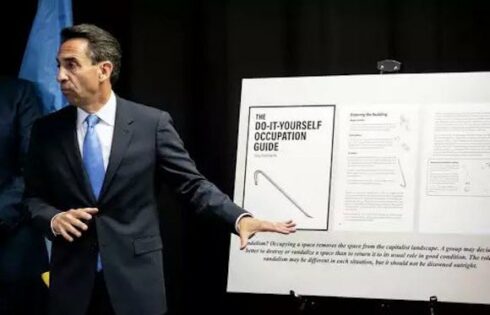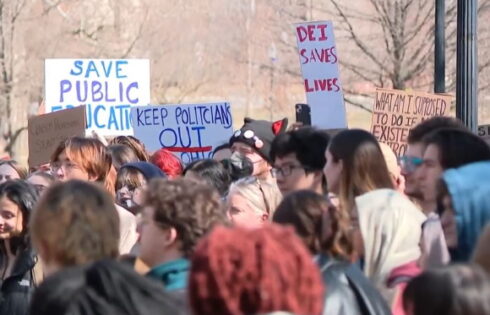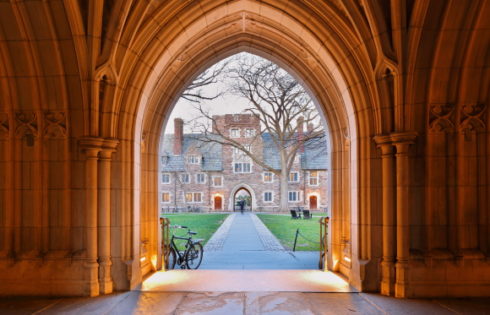
Harvard forced dozens of students to quarantine with no basis
One of the few media outlets that can change the whole media ecosystem’s approach to covering a given subject is The New York Times.
For reasons that continue to escape me, that hasn’t happened in the six months since it reported on the open secret of COVID-19 testing: how inaccurate it is.
The PCR tests most commonly used to test for the novel coronavirus are idiotically sensitive, to the point where they can catch dead virus or otherwise insignificant viral loads. This means even a “positive” test indicates a non-infectious person – someone who shouldn’t be forced to quarantine, much less wear a mask. (Reminder that people without symptoms are extremely unlikely to transmit virus even in the same home.)
False positives are likely when samples are tested at high “amplification cycles”:
The PCR test amplifies genetic matter from the virus in cycles; the fewer cycles required, the greater the amount of virus, or viral load, in the sample. The greater the viral load, the more likely the patient is to be contagious.
This number of amplification cycles needed to find the virus, called the cycle threshold, is never included in the results sent to doctors and coronavirus patients, although it could tell them how infectious the patients are.
A virologist from the University of California-Riverside told the Times she doesn’t trust a cycle threshold over 35, and a Harvard epidemiologist recommended a max of 30.
“Most tests set the limit at 40, a few at 37,” according to the Times, yet the threshold is “never included in the results sent to doctors and coronavirus patients.” This has staggering consequences: Testing data from Massachusetts, New York and Nevada overstated meaningful “positives” by “up to 90 percent.”
One of the most prestigious student newspapers in the country, The Harvard Crimson, is finally catching up to the problem of wildly inflated positive tests. Yet even its coverage deprives readers of basic information about the methodology behind COVID tests for Harvard students.
It’s not even clear the two reporters asked the testing labs for the cycle threshold they’re using. They certainly weren’t aware that a Harvard epidemiologist has spoken on the subject in the national media, or that Massachusetts was identified as wildly overstating positive tests.
MORE: Ivy League epidemiologist questions cycle thresholds used in campus testing
Here’s how Friday’s report begins:
At least 26 Harvard affiliates received positive Covid-19 test results between Jan. 25 and Feb. 5 — forcing at least some into isolation housing — that were later invalidated after the testing lab adjusted the threshold required to determine a positive result.
This is not a small matter: Not only were students forced to quarantine for 10 days on a false basis, but so were their “close contacts.”
The reporters don’t provide a useful description of how tests are interpreted, or even use the phrases “cycle threshold” or “amplification cycles,” however. They simply noted that Harvard and the Broad Institute at MIT process the tests, and quoted an institute spokesperson who said it recently “adjusted the interpretation thresholds that we use to call a test ‘positive.'”
What was the previous “interpretation threshold”? What’s the new one? Why didn’t MIT’s Broad Institute change its “interpretation” earlier? (Like, after the Times report on PCR test sensitivity?)
How do Harvard’s varying cycle thresholds compare to those used by other colleges? What about those used by state and local government testing programs? Why not ask Harvard’s own epidemiologists?
The Crimson doesn’t say, and doesn’t seem to realize the threshold is kind of an important thing for readers to know. The university may be imprisoning hundreds of students – not just the 26 whose tests were invalidated based on a change in “interpretation” – who are not infectious and may not have any live virus in them.
People their age are at very low risk for COVID complications, even if they get noticeably sick – something also ignored by the Crimson.
This is weak journalism, and sadly it’s also the standard in the mainstream media when it comes to (not) informing readers about the methodologies and assumptions in COVID testing – the basis for nearly every restriction imposed by states and localities for the past 11 months.
MORE: 26,000 positive tests on campus, zero hospitalizations
The Crimson report is better at conveying the human toll of nonsensical testing thresholds. It interviewed students who suspected their flagged tests were false positives, yet had to slog through a hostile bureaucracy to get retested and leave quarantine early:
[Luis] Sueiro said he did not experience any Covid-19 symptoms, and no one he had been in contact with in the days prior tested positive.
After calling HUHS to ask for another test to confirm his results, Sueiro said he was “met with a lot of opposition.” He said he continued asking every day during HUHS phone check-ins and temperature checks, and his request was denied by staff around four times.
The one time Sueiro did make headway, HUHS put him in contact with a physician, who was also “pretty opposed to giving another test,” but agreed to administer an antibody test three weeks later to determine if Sueiro actually had the illness.
He called Harvard University Health Services several times after receiving his negative test “before given approval to move out Wednesday evening.”
Another student with no symptoms and no positives among close contacts was repeatedly denied retesting over several days, and a nurse “eventually came to conduct a re-test” but told the student nothing would likely change.
“Well, if nothing’s going to change,” the student told the Crimson, “then why even test us in the first place?”
Great question. The Crimson should do its job and press the administration on its apparent disinterest in letting students out of COVID prison, even when they have no symptoms and their positive test results are based on hidden cycle thresholds.
I’m not holding my breath.
MORE: ‘This is prison‘
IMAGE: studiostoks / Shutterstock.com
Like The College Fix on Facebook / Follow us on Twitter







Please join the conversation about our stories on Facebook, Twitter, Instagram, Reddit, MeWe, Rumble, Gab, Minds and Gettr.